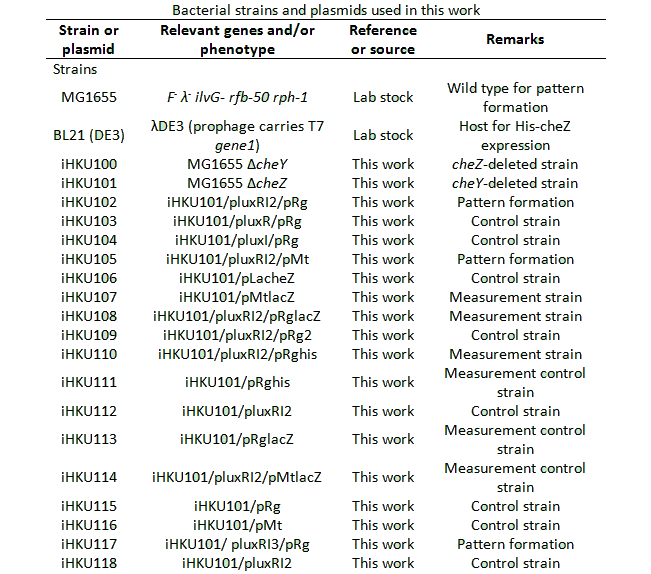Team:iHKU/design
From 2008.igem.org
(Difference between revisions)
| Line 16: | Line 16: | ||
font-size: 13px; | font-size: 13px; | ||
} | } | ||
| - | p | + | p:first-letter |
{ | { | ||
color:#990000; | color:#990000; | ||
| Line 158: | Line 158: | ||
<div id="main"> | <div id="main"> | ||
<div id="up1"> | <div id="up1"> | ||
| - | <table width="100%" border="0"> | + | <table width="100%" border="0"> |
<tr> | <tr> | ||
| - | <th width=" | + | <th width="65%" scope="row"> </th> |
| - | <td width=" | + | <td width="35%"><span class="headline"><a href="http://www.hku.hk">The University of Hong Kong</a> | <a href="http://www.hku.hk/facmed/">The Faculty of Medicine</a></span></td> |
</tr> | </tr> | ||
</table> | </table> | ||
| Line 259: | Line 259: | ||
<h3 class="style7"> </h3> | <h3 class="style7"> </h3> | ||
<h3 class="style7"><strong><a name="1" id="1"></a></strong>Our Aim</h3> | <h3 class="style7"><strong><a name="1" id="1"></a></strong>Our Aim</h3> | ||
| - | <p | + | <p>We endeavor our strains to grow into patterns by arranging themselves in a synchronous, self-organised manner, “just as in organisms in nature which all are able to develop shapes and patterns.” Implementing such idea on bacteria sheds light to a mechanism involving cell-cell communication that would produce a key response, predominately a respond affecting cell motility. The characteristics of the response logically should be critical towards the formation overall pattern. </p> |
<p align="right"><a href="#top">[Back to Top]</a></p> | <p align="right"><a href="#top">[Back to Top]</a></p> | ||
<h3><strong><a name="2" id="2"></a>Chassis selection</strong></h3> | <h3><strong><a name="2" id="2"></a>Chassis selection</strong></h3> | ||
| - | <p | + | <p>Past chemotaxis studies have provided the molecular basis of cellular motility regulation, <em>Escherichia coli</em> and Bacillus subtilis are notably the well-understood strains which are ideal to be the chassis of our designed genetic circuit. We chose <em>E.coli</em> as our chassis for the project reasoning that cell-cell communications will require the use of a signaling molecule, which are often density related. <em>E.coli</em> is known to be less motile than <em>Bacillus</em> in terms of speed, thus would ease the accumulation of the signaling molecule. We hope the subsequent pattern generated by using <em>E.coli</em> as chassis would be finer and more interesting.</p> |
<p align="right"><a href="#top">[Back to Top]</a></p> | <p align="right"><a href="#top">[Back to Top]</a></p> | ||
<p></p> | <p></p> | ||
<h3><strong><a name="3" id="3"></a>Genetic Circuit Design</strong></h3> | <h3><strong><a name="3" id="3"></a>Genetic Circuit Design</strong></h3> | ||
| - | <p | + | <p>An On-Off motility design is desired as the response to cell-cell communication. Based on the pioneer work (Topp & Gallivan 2006) shows the motility can be abolished by knocking out the <strong><em>cheZ</em></strong>gene, and can be restored by subsequent re-introduction of the <em>cheZ</em> gene under a controllable promoter back into the host.<br /> |
We designed two DNA constructs whose cheZ expression level would be sensitive to the concentration of AHL (Acetyl homoserine lactone). One would become <strong>motile</strong> in the presence of AHL, while the other one be become <strong>immotile </strong>under the same condition. Since concentration of AHL is proportional to <strong>cell density</strong>, the motility of our strains would be dependent on local cell density.</p> | We designed two DNA constructs whose cheZ expression level would be sensitive to the concentration of AHL (Acetyl homoserine lactone). One would become <strong>motile</strong> in the presence of AHL, while the other one be become <strong>immotile </strong>under the same condition. Since concentration of AHL is proportional to <strong>cell density</strong>, the motility of our strains would be dependent on local cell density.</p> | ||
<p align="center"><img src="/wiki/images/4/4f/Lux.gif" width="565" height="175" /></p> | <p align="center"><img src="/wiki/images/4/4f/Lux.gif" width="565" height="175" /></p> | ||
| Line 285: | Line 285: | ||
<td width="95%"><div align="center"> | <td width="95%"><div align="center"> | ||
<p><img src="/wiki/images/5/5d/Design_tab1.png" width="538" height="551" /></br> | <p><img src="/wiki/images/5/5d/Design_tab1.png" width="538" height="551" /></br> | ||
| - | <img src="/wiki/images/7/7d/Design_tab2.png" width="538" height="430" /></p | + | <img src="/wiki/images/7/7d/Design_tab2.png" width="538" height="430" /></p> |
| - | + | <p align="right"><a href="#top">[Back to Top] </br></a></p> | |
| - | + | </div></td> | |
</tr> | </tr> | ||
</table> | </table> | ||
Revision as of 17:19, 29 October 2008
 "
"




